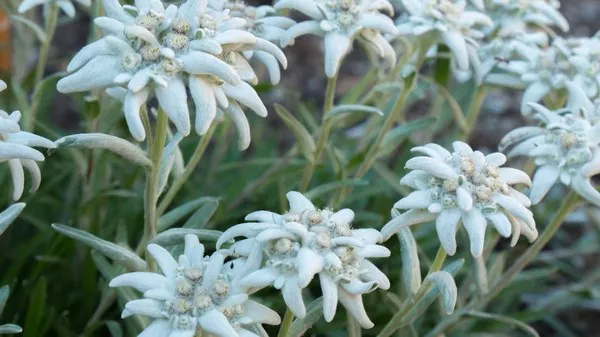Flowers, with their enchanting colors and delicate petals, hold a special place in our hearts. Whether received as a gift or picked from your garden, the beauty of flowers doesn’t have to be fleeting. Air drying flowers is a timeless method of preserving their charm, allowing you to enjoy them for an extended period.
Choosing the Right Flowers for Drying
Not all flowers are equally suitable for air drying, and selecting the right varieties is crucial for achieving optimal results. Flowers that are known for retaining their shape and color during the drying process include roses, lavender, statice, yarrow, and baby’s breath. Choose flowers that are in full bloom but not overly mature, as younger blooms tend to hold up better during drying.
Harvesting Flowers at the Right Time
The timing of harvesting plays a significant role in the success of air drying flowers. Choose to harvest flowers in the morning after the dew has evaporated, but before the heat of the day. Flowers should be cut with sharp, clean scissors or pruning shears, leaving a sufficient stem length for bundling. Avoid harvesting flowers that are overly wet, as excess moisture can impede the drying process.
Preparing Flowers for Drying
Upon harvesting, it’s essential to remove excess foliage and any damaged petals from the flowers. Strip the stems of leaves that would be below the waterline in a vase, as these can contribute to mold during drying. Consider giving the stems a fresh cut at an angle to promote better water absorption during the initial stages of the drying process.
Choosing the Right Drying Location
Selecting an appropriate drying location is critical for the success of air drying flowers. Opt for a dark, dry, and well-ventilated area that is not exposed to direct sunlight. Sunlight can cause flowers to fade, and excessive humidity may hinder the drying process or lead to mold growth. Attics, closets, or unused rooms with good air circulation are ideal choices.
Bundling Flowers for Drying
Bundle the flowers together in small bunches to facilitate the drying process. Secure the stems with twine or rubber bands, ensuring that the bundles are compact but not overly tight. Hanging flowers upside down allows them to maintain their shape and prevents wilting. Consider grouping similar flowers together to create visually cohesive arrangements once dried.
Hanging Flowers Upside Down
Hanging flowers upside down is a traditional and effective method for air drying. Attach the flower bundles to a horizontal line or hanger using twine, hooks, or clothespins. Ensure that there is enough space between the bundles to allow for proper air circulation. The upside-down position helps prevent drooping and encourages straight stems and vibrant petal colors.
Drying Flowers in Silica Gel
An alternative method for air drying flowers involves using silica gel, a desiccant that absorbs moisture. Place a layer of silica gel in an airtight container and bury the flowers in the gel, ensuring that they are completely covered. Seal the container and let the flowers sit for several days until they are fully dried. Silica gel allows for quicker drying and preserves the flowers’ shapes exceptionally well.
Patience in the Drying Process
Patience is a virtue when it comes to air drying flowers. The process typically takes one to three weeks, depending on factors such as flower type, humidity levels, and the specific drying method used. Resist the temptation to check on the flowers too frequently, as disturbing them during the drying process may affect the end result.
Checking for Dryness
To determine if the flowers are fully dried, carefully inspect a sample from each bundle. The petals should feel dry to the touch, and the stems should be rigid. If there is any lingering moisture, continue the drying process for another few days before rechecking. Flowers that are not fully dried may wilt or develop mold during storage.
Preserving Color in Dried Flowers
Retaining the vibrant colors of flowers during the drying process is a common concern. To preserve color, it’s advisable to dry flowers in a dark or dimly lit space. Additionally, drying flowers in a location with good air circulation helps prevent mold growth, which can cause discoloration. Choosing flowers with naturally robust colors also contributes to more vibrant dried results.
Sealing and Storing Dried Flowers
Once the flowers are fully dried, consider applying a protective sealant to enhance their longevity. Products like clear acrylic spray or hairspray can be lightly sprayed on the dried flowers to provide a protective coating. Allow the sealant to dry thoroughly before storing the flowers in airtight containers or display cases. Store dried flowers in a cool, dark place to prevent exposure to light and humidity.
Creative Ideas for Using Dried Flowers
The beauty of air-dried flowers extends beyond preservation—they can be incorporated into various creative projects. Consider using dried flowers to make floral arrangements, wreaths, or pressed flower art. Dried flowers also make charming additions to potpourri, sachets, and homemade candles. Embrace your creativity and experiment with different ways to showcase the timeless beauty of dried flowers.
Conclusion
Air drying flowers is a delightful and rewarding process that allows you to capture the ephemeral beauty of blooms and enjoy them for an extended period. Whether you choose traditional hanging methods or experiment with silica gel, the key lies in patience and attention to detail. From choosing the right flowers to preserving their colors and exploring creative projects, air drying flowers opens a world of possibilities. As you embark on this journey of preserving nature’s beauty, savor the timeless elegance of dried flowers in your home or share them as thoughtful gifts that encapsulate the fleeting magic of blooming moments.


